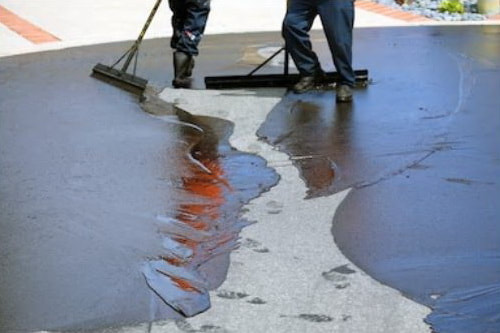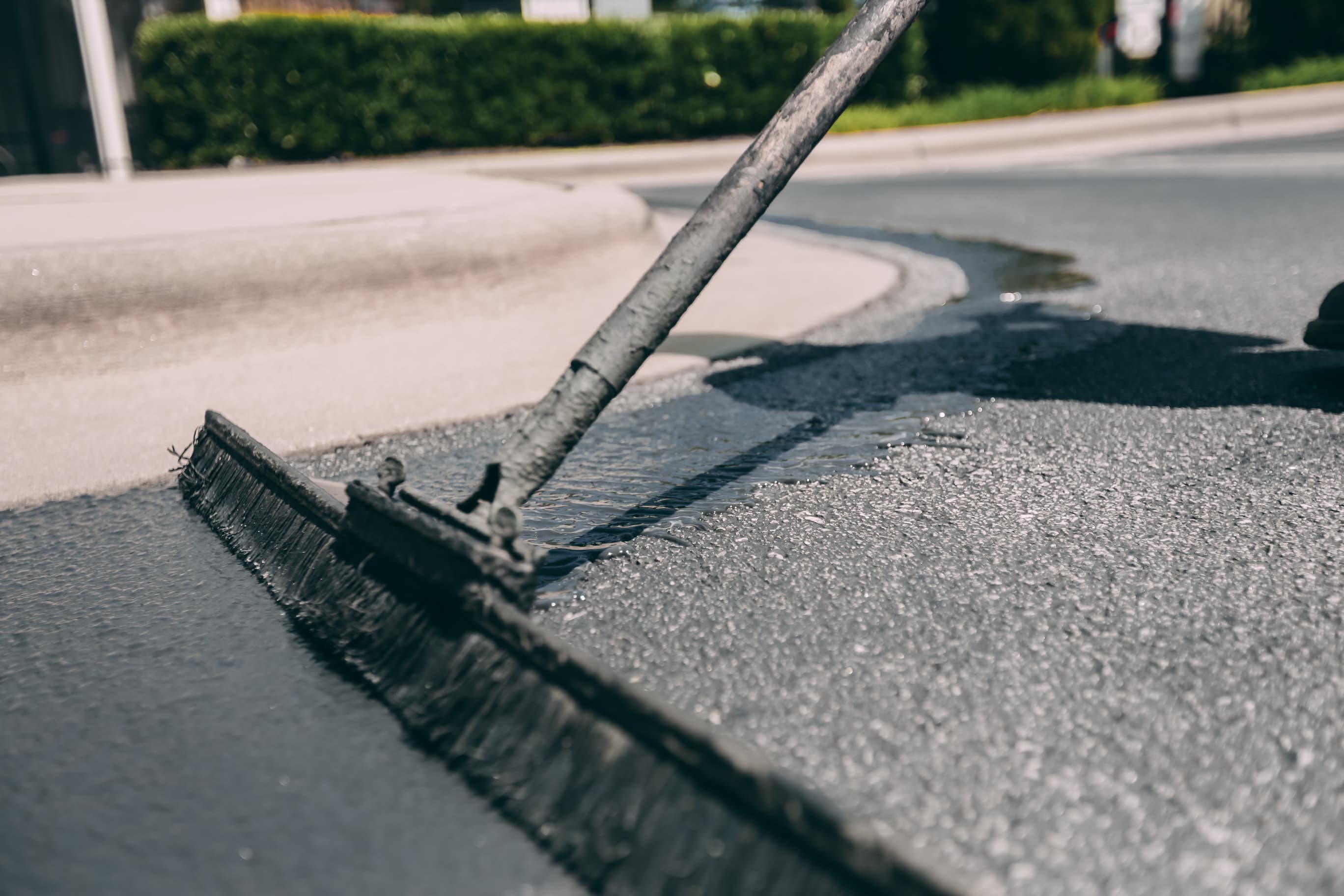Maximize Longevity: Hot Mix Asphalt Sealing for Angled Parking Frameworks
Maximize Longevity: Hot Mix Asphalt Sealing for Angled Parking Frameworks
Blog Article
Warm Mix Asphalt: A Lasting Option for Pavement
Hot Mix Asphalt (HMA) has emerged as a leading lasting choice for pavement options, using a myriad of ingenious technologies and environmental benefits. Its ability to lower and reuse products power intake presents an engaging instance for its adoption in road construction tasks. Additionally, the long-lasting performance and durability of HMA make it a favored choice for infrastructure advancement. As the need for environmentally friendly building practices grows, checking out the subtleties of HMA's sustainability can offer valuable understandings into the future of sidewalk options.
Ecological Benefits of Hot Mix Asphalt

In Addition, Warm Mix Asphalt helps to alleviate urban heat island effects. Its dark color absorbs sunlight, lowering the amount of warmth reflected back into the ambience contrasted to lighter-colored pavements. This can reduce ambient temperature levels in urban locations, reducing the need for a/c and ultimately lowering energy consumption.
On top of that, Hot Mix Asphalt adds to enhanced stormwater administration. Its porous nature enables water to penetrate the pavement and recharge groundwater materials, lowering drainage and the danger of flooding. These environmental advantages make Hot Mix Asphalt a sustainable option for leading highways and roads.
Energy Efficiency in HMA Production
Is energy performance a vital element in the production of Warm Mix Asphalt (HMA)? Energy plays a substantial function in the production of HMA, impacting both price and environmental sustainability. One vital facet of energy performance in HMA manufacturing is the use of cozy mix asphalt (WMA) innovations.
Moreover, developments in plant modern technologies have led to more energy-efficient HMA manufacturing processes. By optimizing energy usage in HMA production, the sector can minimize its carbon impact while keeping premium sidewalk materials.
Recyclability of Hot Mix Asphalt
The recyclability of Hot Mix Asphalt (HMA) is a pivotal element of its sustainability and long-lasting environmental influence. HMA is just one of the most recycled products in the USA, with over 100 million lots of redeemed asphalt pavement (RAP) being recycled each year in new sidewalk construction. Reusing HMA provides a number of environmental advantages, such as minimizing the need for virgin products, lowering power intake throughout production, and lowering the quantity of waste sent to land fills.
The procedure of recycling HMA includes crushing the existing sidewalk, crushing it right into smaller pieces, and Recommended Site blending it with brand-new accumulation and asphalt binder to create a recycled mix. On the whole, the recyclability of HMA plays a considerable duty in promoting sustainable methods within the sidewalk industry.

Long-Term Efficiency of HMA
Asphalt pavements show toughness and resilience over an extended duration, reflecting the lasting efficiency of Hot Mix Asphalt (HMA) The durability of HMA can be credited to its capability to hold up against rush hour lots, harsh weather condition conditions, and the impacts of aging. Research studies have revealed that properly designed and properly built HMA sidewalks can last for 20 years or even more with normal upkeep. The trick to making best use of the long-term efficiency of HMA hinges on making use of high-grade materials, following best methods in building and construction, and applying efficient maintenance strategies. Appropriate water drainage, regular inspections, and prompt repair services are crucial for maintaining the architectural stability of HMA sidewalks gradually. Furthermore, advancements in HMA modern technology, such as the use of polymer-modified binders and cozy mix asphalt, have actually additionally improved the toughness and durability of HMA pavements. By focusing on quality construction and maintenance techniques, HMA proceeds to verify itself as a sustainable and cost-effective remedy for lasting see this page pavement infrastructure.

HMA: Toughness and Sustainability
Showing both sturdiness and sustainability, Warm Mix Asphalt (HMA) has actually come to be a foundation in the building and construction of long-lasting pavement facilities - commercial parking lot paving. HMA's durability comes from its capability to hold up against hefty loads, harsh weather, and high traffic volumes, making it a trusted selection for roads, highways, and airport terminal paths. The composition of HMA, which normally consists of aggregates, binder, and filler, plays a crucial role in enhancing its long life and resistance to tear and wear
Additionally, HMA's sustainability hinges on its recyclability and energy-efficient manufacturing procedure. The ability to recycle recovered asphalt sidewalk (RAP) in new HMA mixtures minimizes the demand for virgin products and reduces the ecological influence of pavement construction and maintenance. In addition, the energy efficiency of producing HMA exists in its lower blending temperature levels contrasted to other pavement materials, bring about minimized power consumption and greenhouse gas discharges.
Verdict
Finally, warm mix asphalt (HMA) uses a sustainable option for sidewalk with its environmentally friendly qualities. HMA's recyclability, energy performance in manufacturing, and long-term resilience make it an environmentally friendly choice for road building. By saving natural deposits, lowering waste, and lowering greenhouse gas discharges, HMA plays an essential function in advertising sustainability in infrastructure advancement. Its capability to minimize metropolitan heat island impacts even more highlights its relevance in creating environmentally mindful and resilient pavement systems.
HMA is one of the most recycled materials in the United States, with over 100 million tons of reclaimed asphalt sidewalk (RAP) being recycled every year in new sidewalk construction.The procedure of reusing HMA includes crushing the existing pavement, squashing it into smaller items, and blending it with new accumulation and asphalt binder to find develop a recycled mix.Asphalt pavements show sturdiness and resilience over an extensive duration, showing the long-term performance of Warm Mix Asphalt (HMA) Furthermore, improvements in HMA technology, such as the usage of polymer-modified binders and warm mix asphalt, have even more boosted the resilience and durability of HMA sidewalks. The capacity to recycle reclaimed asphalt sidewalk (RAP) in new HMA combinations reduces the demand for virgin products and lessens the environmental effect of pavement building and construction and maintenance.
Report this page